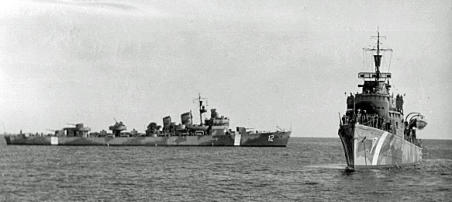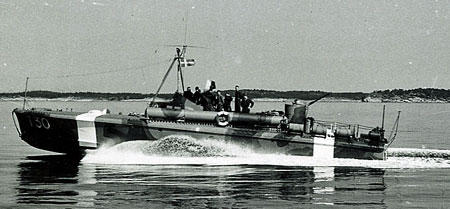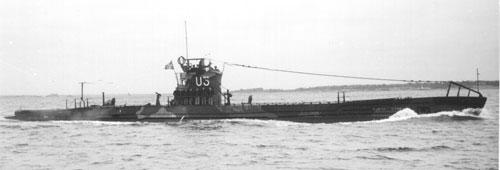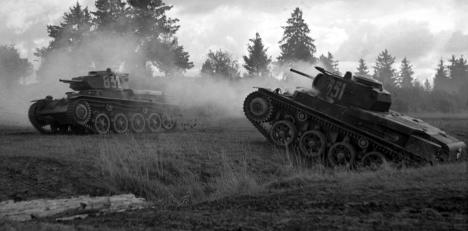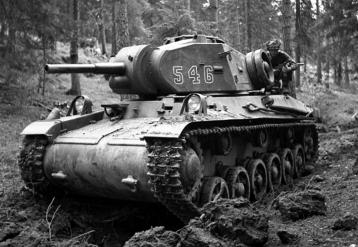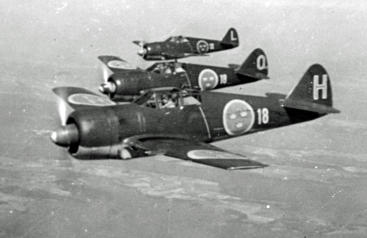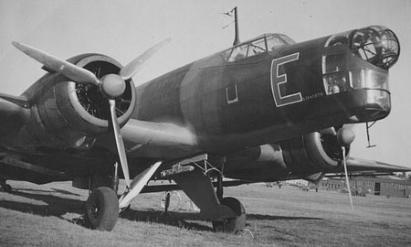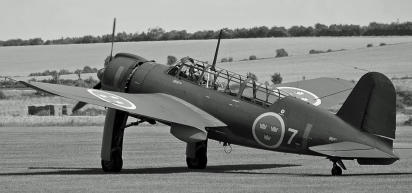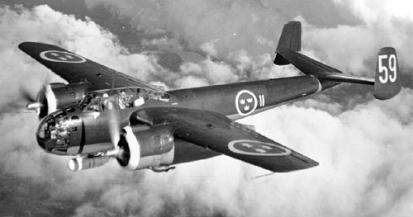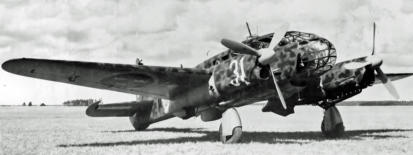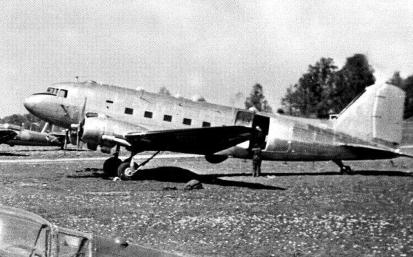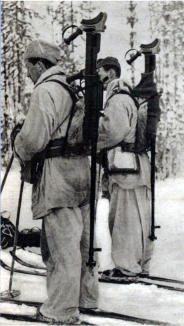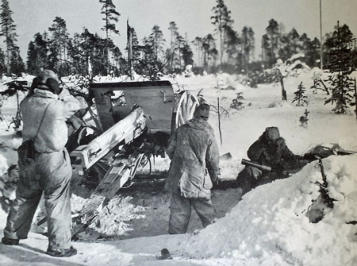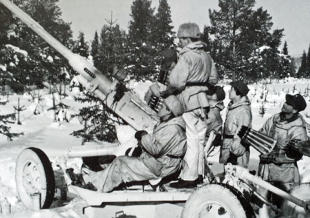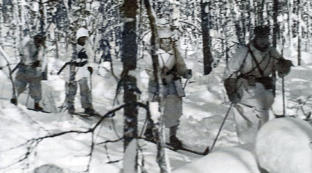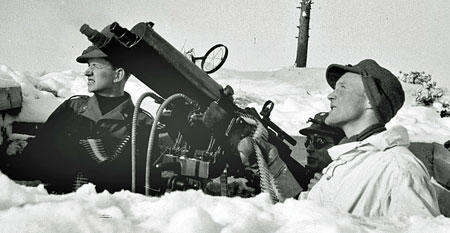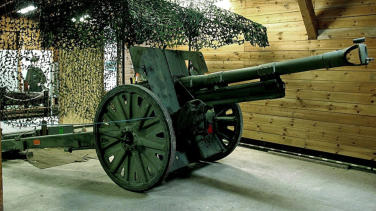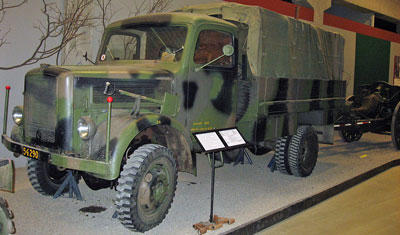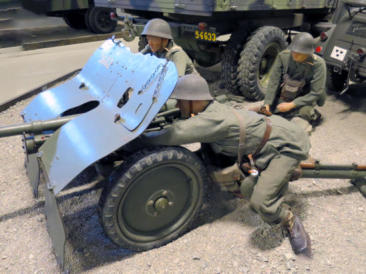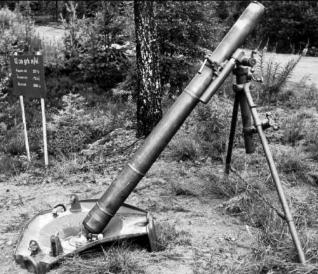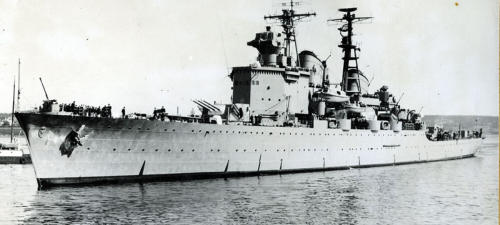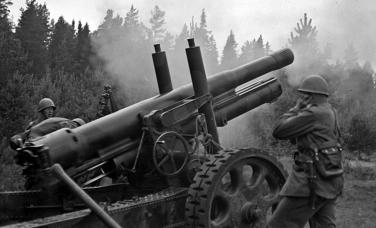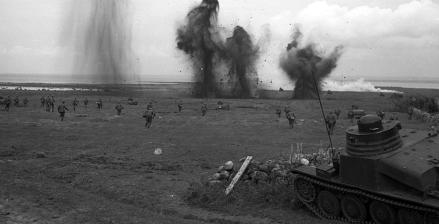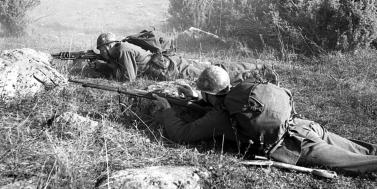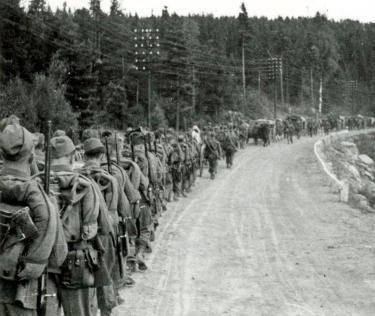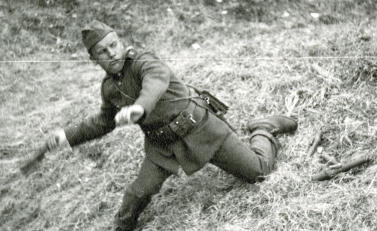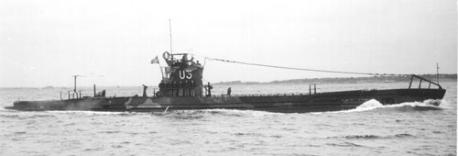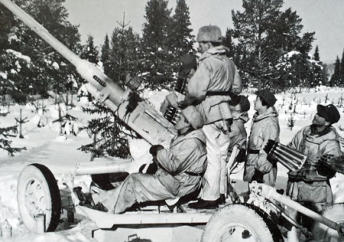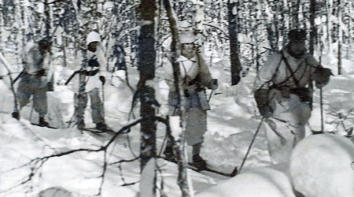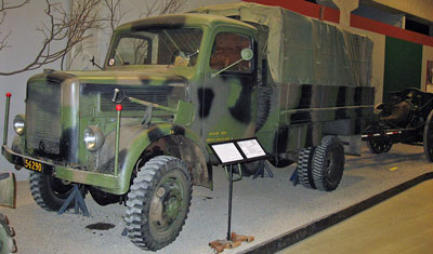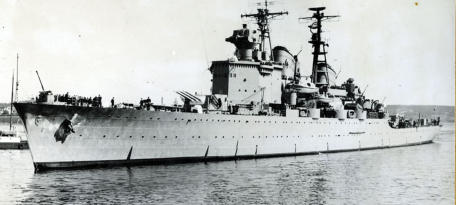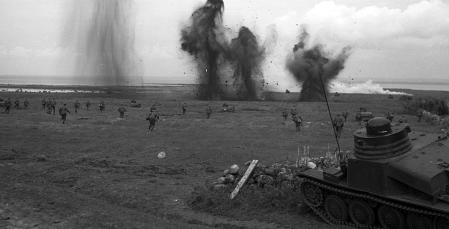

Copyright © Hans Högman 2020-12-18
Sweden’s Military
Preparedness 1939 - 1945
Military Images, Sweden, 1939 -
1945
At the outbreak of WWII on 1 September 1939,
Sweden made a partial mobilization two strengthen
its military preparedness. These forces were called
the Neutrality Watch (Swe: Neutralitetsvakten) and
were in service throughout the war. However, the size
of the Neutrality Watch varied a lot during the war
depending on how Sweden at various times
experienced the threats upon the nation.
From 23 June 1940, all Swedish warships were
carrying two white stripes painted abeam on upper
decks and sides to clarify that they were ships of a
neutral nation to avoid accidental shootings by the
belligerent nations.
Military Images of the Swedish Armed
Forces, 1939 - 1945
Aircraft S 16 Caproni (Ca 313) marked number 31
stationed at F 11 Nyköping Air-wing, on an airfield.
Image: Flygvapenmuseum.
The Caproni Ca 313 was a twin-engine bomber and
long-range reconnaissance aircraft from Italy. Between
1940 and 1945 Caproni Ca.313 was part of the
Swedish Air Force.
Two Swedish Destroyers, HMS Sundsvall (J 12) and
HMS Malmö (J 7). The J 12, with a length of 98 m, was
launched in 1942 and J 7 with a length of 95 m was
launched in 1938. Image: Wikipedia.
The Swedish motor torpedo boat T30 with two white
stripes abeam. Launched 1943, length 20 m, crew of
11. Photo: Sjöhistoriska museet, ID: Fo88651AB
Swedish submarine U3. Coastal submarine launched
in 1942, length 50 m. Image: Wikipedia.
The two images show the Swedish tank m/42 in an
exercise during WWII. The tank was manufactured
between 1943 and 1945. Weight: 22.5 ton. crew: 4 .
Armament: 7.5 cm canon and two 8 mm machine
guns. Max speed: 42 km/h. Images: Krigsarkivet.
Swedish fighter aircraft J 22 (Swedish-made in 1942).
FFVS J 22 was a fighter aircraft used as a fighter and
reconnaissance aircraft. Deliveries of the J 22 began in
October 1943. The J 22 had good maneuverability and
acceleration. Performance-wise, the J 22 was on par
with most in its first year with a well-trained pilot.
Bomber B3 (Junkers Ju 86) in Swedish service.
Image: Flygvapenmuseum, ID: FVMF.003489.
A German medium bomber produced in series by
Junkers from 1936 and under license in Sweden by
Saab in Trollhättan with the designation B3.
The Swedish Saab B17A light bomber. Image:
Wikipedia.
The Saab 17 was available in two models, a bomber
and a reconnaissance aircraft.
On 23 March 1942, the first series-built Saab 17 is
delivered to the Swedish Air Force.
The Swedish Saab B18A bomber. Image: Wikipedia.
Saab 18 was a twin-engine bomber and attack aircraft
with 3 crew in service from June 1944.
The Swedish spy plane DC3 (Tp 79 Hugin) at Svea Air
Wing F8 in Barkarby in 1951, i.e. the year before it was
shot down by Soviet fighter aircraft while carrying out
radio and radar signals intelligence-gathering over the
Baltic Sea. Three of the eight crew members were
military personnel from the Swedish Air Force, and the
other five were signals intelligence (SIGINT) operators
from the FRA, the Swedish National Defense Radio
Establishment.
The sister aircraft was called TP 79 Munin. Image:
Wikipedia.
Howitzer m/1940 H. Caliber: 10.5 cm. Image:
Gotlands Försvarsmuseum, ID: GFM.000102.
Howitzer m/40 was a Swedish artillery piece with
caliber 10.5 cm developed by Bofors in the 1930s.
Two Swedish soldiers in
snowsuits with anti-tank
weapons during WWII. Image:
Wikipedia.
A Swedish Bofors 40 mm automatic anti-aircraft
gun m/36 (L/60) in firing position, 1940. The guns
were painted white to avoid detection in the white
landscape. Image: Krigsarkivet.
A Swedish ski patrol on a mission in 1940. Image:
Krigsarkivet.
An anti-aircraft position with double-barreled anti-
aircraft gun m/36. The m/36 machine gun was available
in both single and double versions as an anti-aircraft
machine gun, in 8 mm caliber.
Photo: Karl Johan Åke Sundström, 1940. Image:
Flygvapenmuseum, ID: FVMF.004492.
Swedish artillerymen at a 7.5 cm howitzer in the
moment of firing, 1940. Image: Miliseum, ID:
MILIF.003907.
The image shows the All-terrain truck m/42 M used
by the Swedish Army (mainly by the Artillery). It was
delivered to the Swedish Army in 1943 and 1944
(Klöckner A3000). Museum Arsenalen. Photo: Hans
Högman, 2012
Swedish infantry soldiers in uniform m/1939 with a
Bofors anti-tank gun m/1938, caliber 37 mm. Its
high rate of fire and mobility made the weapon
popular with troops as it could easily take out
multiple targets and change position in quick
succession. Tank Museum Arsenalen, Strängnäs.
Photo, Hans Högman 2016.
Mortar m/1941, 12 cm. Image: Karlsborg
fästningsmuseum, ID: KBGF.011180.
Swedish submarine HMS Sjöborren of the Sjölejonet-
class. Launched 1941, length 64 m. Image: Wikipedia.
The Swedish Cruiser HMS Tre Kronor in Sundsvall's
outer harbour. Length: 180,2 m, Width: 16,7 m.
Launched: 1944. Photo: Sjöhistoriska museet.
The ship was the first of the two cruisers in the Tre
Kronor class, which consisted of HMS Tre Kronor and
her sister ship HMS Göta Lejon.
Artillery piece firring in Sweden during WWII.
Probably howitzer m/1939, 15 cm. Image
Krigsarkivet.
Infantry attacking under artillery fire in an exercise
during the WWII years in Sweden. Image Krigsarkivet.
Infantrymen in firing positions in Sweden during the
years of WWII. Image: Krigsarkivet.
Troop movement, marching by road in Sweden
during WWII. Image: Armémuseum.
Swedish soldier about to throw a hand grenade
during WWII. Image: Armémuseum
Infantry, crossing of a stream during the years of
WWII in Sweden. Image: Krigsarkivet.
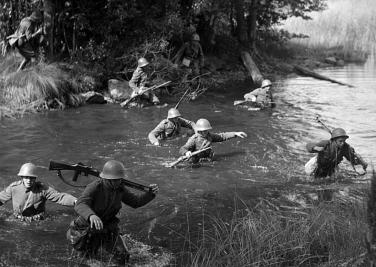

Related Links
•
Swedish military war units 1939 - 1945
•
Sweden’s Military Preparedness 1939 - 1945
•
Signals Intelligence - Crypto Department 1939 -
1945
•
Swedish military intelligence
•
Norwegian and Danish police-troops
established in Sweden during WWII
•
Operation Save Denmark
•
Swedish Volunteer Corps in Finland in 1940
•
Swedish Military Aircraft
•
Tanks of Sweden
•
Swedish regiments
•
The organization of the Swedish armed forces
in the 20th century - conscription
•
Uniforms of the Swedish Army - the 1900s
•
History of the Swedish Air Force
•
Military Uniforms of the Swedish Women’s
Voluntary Defense Service
•
Service Uniforms of the Swedish Lotta Corps
(Swe: Lottakåren)
•
Aircraft Warning Service - Female Aircraft
Observers, Sweden
•
Swedish Voluntary Defense Services
•
Animals in War Service
Source References
•
Svenska försvarets hemsida:
http://www.forsvarsmakten.se/sv/
•
Krigsmäns erinran, beredskapen 1939 - 1945,
Åke Williams, 1989.
•
Svenska arméns förband, skolor och staber,
Björn Holmberg, 1993
•
Från Brunkeberg till Nordanvind, 500 år med
svenskt infanteri av Bertil Nelsson, 1993
•
Beredskapsverket, AD. “Den svenska militära
beredskapen 1937 - 1945”.
•
Nationalencyklopedin
•
Wikipedia
Top of Page







